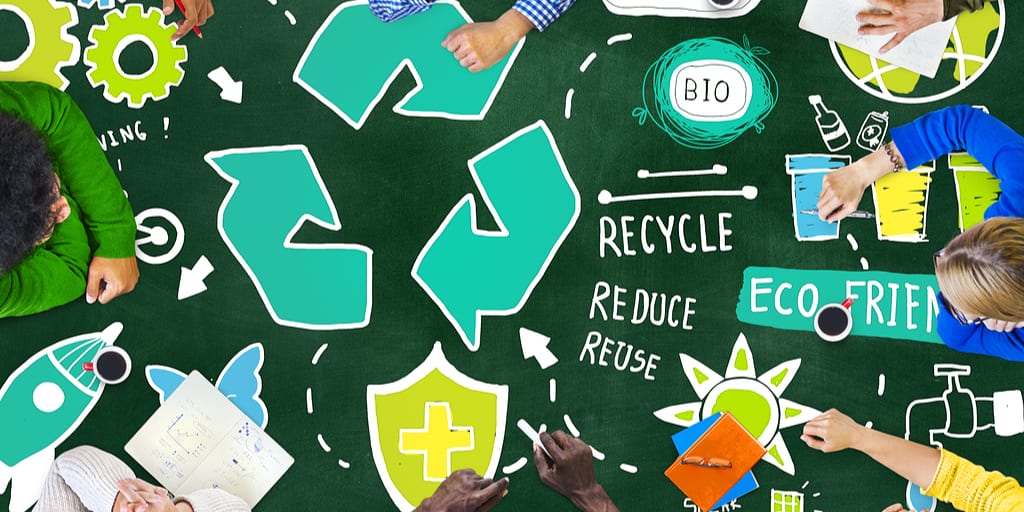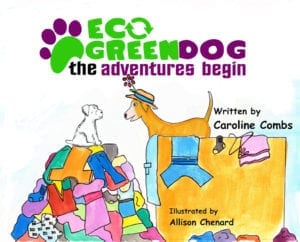The Three R’s of the Environment
Every year, Americans throw away 50 billion food and drink cans, 27 billion glass bottles and jars, and 65 million plastic and metal jar and can covers. More than 30% of our waste is packaging materials. Where does it all go? Some 85% of our garbage is sent to a dump, or landfill, where it can take from 100 to 400 years for things like cloth and aluminum to decompose. Glass has been found in perfect condition after 4,000 years in the earth!
We are quickly running out of space. It’s time to learn the three R’s of the environment: reduce, reuse, recycle. Then practice what you preach: don’t buy things you don’t need or items that come in wasteful packaging or that cannot be recycled. Reuse and recycle whatever you can.
As found on : http://www.factmonster.com/ipka/A0775891.html
Reduce
Reducing the amount of waste you produce is the best way to help the environment. There are lots of ways to do this. For example:
- Buy products that don’t have a lot of packaging. Some products are wrapped in many layers of plastic and paperboard even though they don’t need to be. You can also look for things that are packed in materials that don’t require a lot of energy or resources to produce. Some products will put that information right on their labels.
- Instead of buying something you’re not going to use very often, see if you can borrow it from someone you know.
- Cars use up energy and cause pollution. Some ways to reduce the environmental damage caused by cars include carpooling with friends, walking, taking the bus, or riding your bike instead of driving.
- Start a compost bin. Some people set aside a place in their yard where they can dispose of certain food and plant materials. Over time, the materials will break down through a natural process called decomposition. The compost is good for the soil in your yard and means that less garbage will go to the landfill.
- You can reduce waste by using a computer! Many newspapers and magazines are online now. Instead of buying the paper versions, you can find them on the Internet. Also remember that you should print out only what you need. Everything you print that you don’t really need is a waste of paper.
- Save energy by turning off lights that you are not using.
- Save water by turning off the faucet while you brush your teeth.
- Lots of families receive a large amount of advertisements and other junk mail that they do not want. You can stop the mailings and reduce waste by writing to the following address and requesting that they take your name off of their distribution list: Direct Marketing Association Mail Preference Service
P.O. Box 9008
Farmingdale, NY 11735-9008
Reuse
Instead of throwing things away, try to find ways to use them again! For example:
- Bring cloth sacks to the store with you instead of taking home new paper or plastic bags. You can use these sacks again and again. You’ll be saving some trees!
- Plastic containers and reusable lunch bags are great ways to take your lunch to school without creating waste.
- Coffee cans, shoe boxes, margarine containers, and other types of containers people throw away can be used to store things or can become fun arts and crafts projects. Use your imagination!
- Don’t throw out clothes, toys, furniture, and other things that you don’t want anymore. Somebody else can probably use them. You can bring them to a center that collects donations, give them to friends, or even have a yard sale.
- Use all writing paper on both sides.
- Use paper grocery bags to make book covers rather than buying new ones.
- Use silverware and dishes instead of disposable plastic utensils and plates.
- Store food in reusable plastic containers.
Recycle
Many of the things we use every day, like paper bags, soda cans, and milk cartons, are made out of materials that can be recycled. Recycled items are put through a process that makes it possible to create new products out of the materials from the old ones.
In addition to recycling the things you buy, you can help the environment by buying products that contain recycled materials. Many brands of paper towels, garbage bags, greeting cards, and toilet paper, to name a few examples, will tell you on their labels if they are made from recycled materials.
In some towns you can leave your recyclables in bins outside your home, and a truck will come and collect them regularly. Other towns have recycling centers where you can drop off the materials you’ve collected. Things like paper and plastic grocery bags, and plastic and aluminum cans and bottles can often be brought to the grocery store for recycling. Whatever your system is, it’s important to remember to rinse out and sort your recyclables!

Recycle Symbol
|




